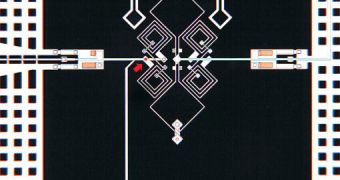Moore's Law states that the number of transistors that fit on an average microprocessor will double in size every couple of years, and that the trend will at one point reach a limit that will no longer allow it to continue. Engineers are painfully aware of the fact that semiconductors such as silicon will eventually not be able to cope with the increasing demands of modern electronics, and that the materials and the very way a computer is structured will have to be changed.
One of the best alternatives, and the one that is pursued the most, is that involving the creation of quantum computers. The chips that would power these computers would be extremely powerful, as they would not rely on the average physical concepts applicable at the macroscale, but on the exotic physics of the small – quantum mechanics. However, the exoticism of the theory also translates into exotic production processes, which have thus far been a great obstacle in the path of true innovation in the field, experts say.
Now, experts at the Ohio State University announce that the obstacle may have been overcome. They reveal the creation of a new method of producing quantum constructs with currently available technologies, though admittedly with a bit of a tweak. Their innovation could for example lead to the creation of high-resolution cameras for surveillance, or to optical devices that could see through rain and bad weather. In charge of the investigation was ASU professor of electrical and computer engineering and professor of physics Paul Berger.
Details of the investigation were accepted for publication, and will appear in the upcoming issue of respected scientific journal IEEE Electron Device Letters. “We wanted to do this [quantum objects] using only the tools found in the typical chip-maker’s toolbox. Here we have a technique that manufacturers could potentially use to fabricate quantum devices directly on a silicon chip, side-by-side with their regular circuits and switches,” the expert explains.
“Chip makers today are having a great difficulty boosting performance in each generation, so they pack chips with more and more circuitry, and end up generating a lot of heat. That's why a laptop computer is often too hot to actually sit atop your lap. Soon, their heat output will rival that of a nuclear reactor per unit volume. That's why moving to quantum devices will be a game-changer,” Berger concludes.

 14 DAY TRIAL //
14 DAY TRIAL //